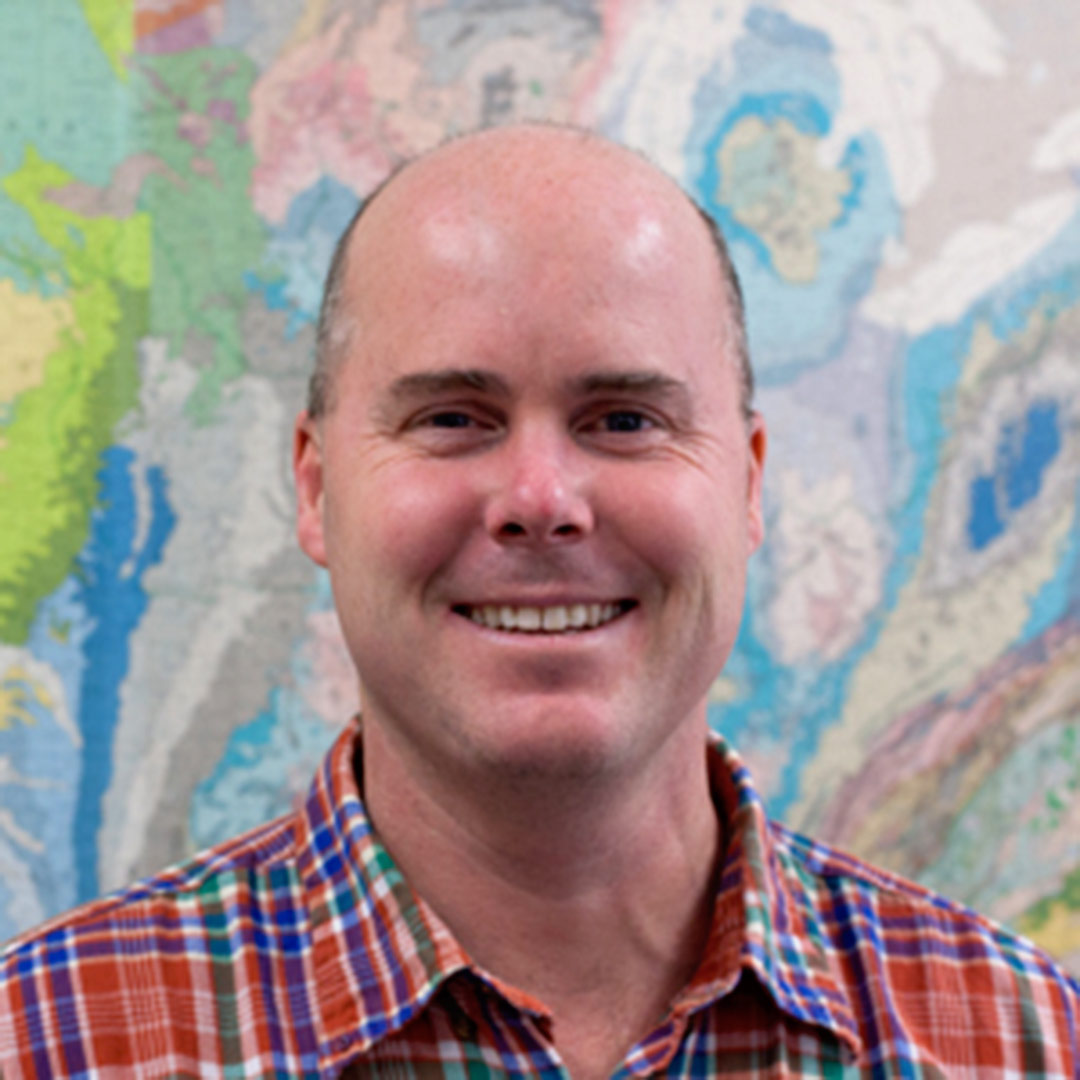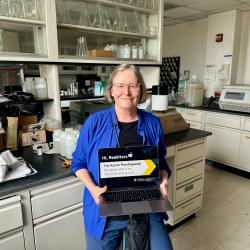National Academy Member James Farquhar Named Chair of UMD’s Department of Geology
Distinguished University Professor James Farquhar has been named chair of the University of Maryland’s Department of Geology for five years, effective July 1, 2021. A member of the National Academy of Sciences, Farquhar holds a joint appointment in UMD’s Earth System Science Interdisciplinary Center (ESSIC). He will take the reins from Richard Walker, who served as department chair since 2016.
“James Farquhar is a researcher and educator of the highest caliber,” said Amitabh Varshney, dean of UMD’s College of Computer, Mathematical, and Natural Sciences. “His geochemistry research is recognized internationally, and I know he can provide the Department of Geology strong direction as we emerge from the challenging and uncertain times caused by the COVID-19 pandemic.”
Farquhar is a scientific leader in sulfur isotope geochemistry, with publications that address geochemical processes on Earth and elsewhere in the solar system, spanning a variety of eras from the modern to the ancient. His work has been published in more than 125 refereed journal articles and been cited nearly 13,000 times.
“As someone who has been a part of the Department of Geology and ESSIC for the past 20 years, I have gained a deep appreciation for the Earth science research done at UMD and the people who make it possible,” said Farquhar, who joined UMD in 2001 as an assistant professor. “I am, therefore, honored to serve as Geology's next chair, and I look forward to working with the college on behalf of the department and broader geoscience efforts.”
He is best known for discovering the geochemical signal that traces the long-term history of atmospheric oxygen. More recently, Farquhar and his colleagues found that Earth’s early atmosphere spent about a million years filled with a methane-rich haze. In 2019, Farquhar and his collaborators developed a new, more accurate system to study the history of large volcanic eruptions over the past 2,600 years.
For his next phase of work, Farquhar teamed up with several collaborators at UMD to focus on methane in Earth’s modern atmosphere, using a new, state-of-the-art, high-resolution instrument called Panorama that began operating at UMD earlier this year.
During his career, Farquhar has mentored over 45 undergraduate, master’s and doctoral students and postdoctoral fellows. Farquhar is a fellow of the Geochemical Society/European Association of Geochemistry and the American Geophysical Union. He has received numerous awards and honors, including a Guggenheim Fellowship, the Fulbright-Tocqueville Distinguished Chair Award from the Franco-American Fulbright Commission, the Samuel Epstein Medal Science Innovation Award from the European Association of Geochemistry, and the F.W. Clarke Award from the Geochemical Society.
He received his bachelor’s degree in geology from Washington and Lee University in 1987, his master’s degree in geophysical sciences from the University of Chicago in 1990, and his Ph.D. in earth and atmospheric sciences from the University of Alberta, in Canada, in 1995. From 1995 until 1997, he was a Carnegie Fellow at the Carnegie Institution of Washington’s Geophysical Laboratory. From 1997 to 2001, Farquhar was a National Science Foundation Postdoctoral Fellow at the University of California, San Diego.
During Walker’s five years as chair, the department hired three assistant professors and an associate professor. Walker also oversaw construction of several new state-of-the-art laboratories for conducting geochemical measurements, experimental petrology and computer modeling of Earth’s surface movements. He also supported faculty and staff members and students in the department through the COVID-19 pandemic.
###
Media Relations Contact: Abby Robinson, 301-405-5845, abbyr@umd.edu
University of Maryland
College of Computer, Mathematical, and Natural Sciences
2300 Symons Hall
College Park, Md. 20742
www.cmns.umd.edu
@UMDscience
About the College of Computer, Mathematical, and Natural Sciences
The College of Computer, Mathematical, and Natural Sciences at the University of Maryland educates more than 9,000 future scientific leaders in its undergraduate and graduate programs each year. The college's 10 departments and more than a dozen interdisciplinary research centers foster scientific discovery with annual sponsored research funding exceeding $200 million.








